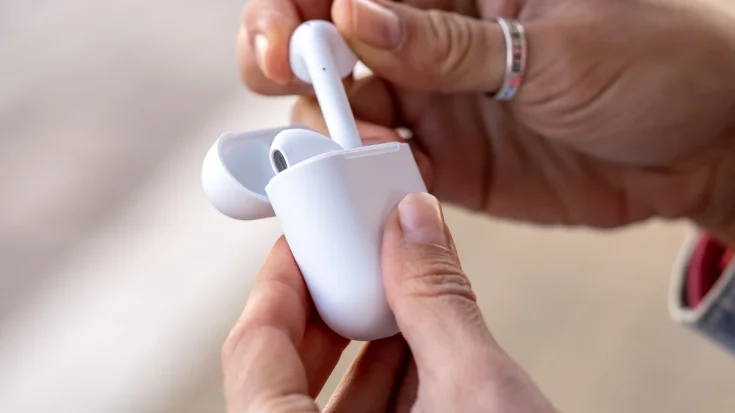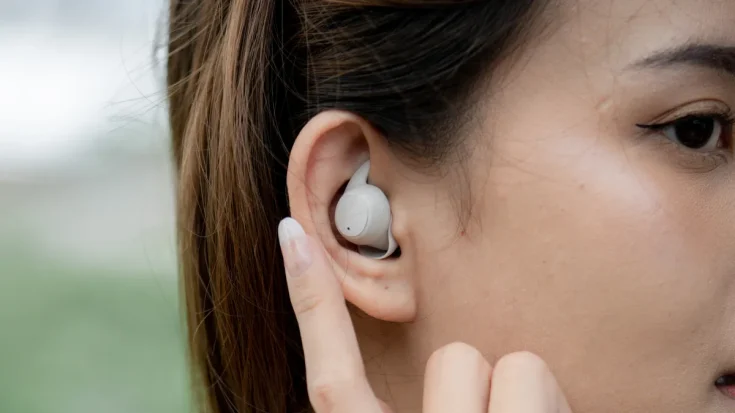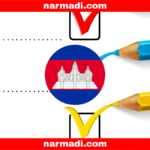Nowadays, listening to audio from smartphones and laptops is rare to find devices with cables, but their role has been replaced by True Wireless Stereo (TWS).
The versatility of use and the features of True Wireless Stereo are what make this tool popular with many people for listening to audio, watching movies, playing games, and making phone calls.
This article will inform you more about True Wireless Stereo from its definition, how it works, its components, functions, features, to the regulations for its use in Indonesia.
Also Read
Table of Contents
What is a True Wireless Stereo?

True wireless stereo (TWS) is a wireless audio device that allows wireless use between the two earbuds and a primary device such as a laptop or mobile phone. The TWS connects to the main device using Bluetooth technology that transmits sound directly to the earbuds.
The TWS was first released in 2015, its emergence supported by the periodic removal of 3.5mm audio ports from their devices. It has been loved ever since for its ability to freely listen to audio, take calls, or play games without annoying wires.
How Does True Wireless Stereo Work?
In general, True Wireless Stereo (TWS) works with Bluetooth technology that connects from a primary device such as a smartphone or laptop. Here is how it works in detail:
- Bluetooth connection: Activate the Bluetooth connection of the primary source (phone or laptop) and connect to the TWS earbud device.
- Inter-earbud synchronization: The TWS uses a master-slave working system, the master connecting to the audio source device and acting as the main receiver, while the slave will then connect to the master earbud.
- Audio transmission: Audio from the main device as the audio source is sent to the master earbud and then forwarded to the slave earbud.
- Digital signal processing: To ensure good audio, the TWS uses digital signal processing (DSP) technology.
The Main Component of True Wireless Stereo
Here are some of the main components of True Wireless Stereo (TWS):
- Bluetooth chipset: Manages wireless connectivity.
- Speaker driver: Converts digital signals into sound.
- Internal battery: Generally sufficient for 3-6 hours of use per charge.
- Charging case: A case that also serves as a portable charger.
- Sensor & microphone: For touch operations and features such as noise cancellation.
The Functions of True Wireless Stereo

The main function of True Wireless Stereo (TWS) is to provide a wireless audio listening experience. Here are some of the functions of TWS:
- Provides wireless stereo audio: Allows listening to audio in stereo from the main device wirelessly.
- Provides convenience and mobility: Offers convenience of use and seamless mobility in the absence of wires.
- Versatility of use: Suitable for a variety of activities such as listening to music or making phone calls even when doing sports, working, or traveling.
The Features of True Wireless Stereo
Here are some features of True Wireless Stereo (TWS):
- Touch control: Allows control of music playback, volume, calls and other functions through touch only on the earbuds.
- Voice assistant integration: Allows integration with Siri, Google Assistant, or Alexa voice assistants.
- Find my earbuds: Helps locate lost earbuds with the tracking feature.
- Wireless charging: Enables wireless charging of the charging box.
- Water and sweat resistance (IPX): Equipped with IPX4 standard or higher to protect the earbuds from damage due to water or sweat.
- Ergonomic design: Designed to be comfortable for long-time listening.
- Long battery life: Lasts from several hours to tens of hours in use.
True Wireless Stereo Regulation in Indonesia

The True Wireless Stereo (TWS) uses communication technologies such as Bluetooth, NFC, RFID, and WiFi that operate within a specific frequency spectrum. In Indonesia, any Bluetooth, ANT+, and WiFi-based wireless device is required to have DJID (Directorate General of Digital Infrastructure) under the Ministry of Communication and Digital (KOMDIGI).
TWS regulation is based on KEPMEN No. 260 Tahun 2024 for Bluetooth, NFC, RFID, and KEPMEN No. 12 Tahun 2025 for WiFi, which requires all radio frequency-based devices to meet specific technical standards before being sold in the country.
The DJID certification ensures that the product meets government safety and quality regulations and does not interfere with other communication devices. The certification process involves technical testing, such as frequency adjustments, safety checks, and compatibility with the surrounding environment.
Once the tests are completed, products that pass are listed in a Test Result Report, which confirms that the product is safe and ready for sale in Indonesia. This report reassures customers that the product meets technical standards and is secure.
For companies wanting to sell a TWS in Indonesia, Type Approval Certification Services for ICT Products are available to assist with this process. This service includes preparing technical and legal documents, conducting required testing, ensuring compliance with regulations, helping companies streamline the certification process, and giving consumers confidence in certified products. -UN.











